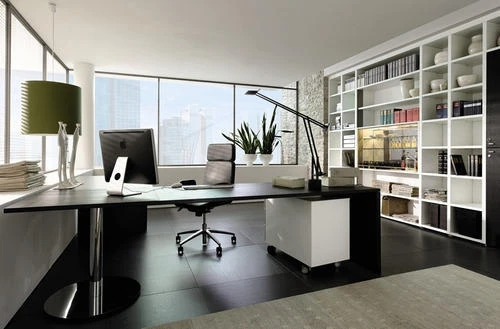A good planning of all the activities that take place in the office allows you to advance the work in large steps, helping you in the realization of your projects. So how to improve the organization in the office in order not to incur delays or to avoid boring unforeseen events that make one deadline slip after another?
Understanding the importance of deadlines is essential for good working time management. To establish what comes first and what can be done next, it is necessary to plan a schedule of commitments and continually update it (by reviewing and correcting it).
Remember that in order for a deadline to be met, this must be a priority not only for you, but for all the people who interact at work. It is therefore important to understand the priorities of others as well, to ensure that your deadline fits in and gets the attention it needs.
Time organization
Developing a deadline schedule does not mean creating a mileage list. Too long a list can easily turn into a list of things I'll never be able to do! And all those tasks that remain due for days on end do nothing but generate stress. If your primary goal is complex, you can divide it into multiple sub-goals and decide how and when they should be addressed.
A great software to organize these lists is Todoist, a web application, for smartphones and desktops, to organize daily activities and put all the daily tasks in order. It's a great way to keep track of projects and professional activities, make lists, and work collaboratively.
Do you need a tool that allows you to jot down your ideas at any time of the day? Are you curating a project and have an intuition that you want to fix before it fades? Do you find an article on the web that interests you? Evernote is the online application that allows you to organize your digital notes, web page clippings and useful addresses into notebooks dedicated to individual topics.
How to manage deadlines and deliveries
If you have deadlines, big or small, you can't just rely on your memory or pen and paper. Technology can facilitate the organization of appointments, establish timelines for different tasks and manage the entire amount of work for you, without having to keep everything in mind or on papers that risk getting lost. Choosing the software that can speed up your work will help you better organize your billing, workflow planning and archiving.
To manage communications and contacts with colleagues, even distant ones, you will need to use a tool with which to send messages to anyone inside or outside your organization. Slack is a great tool that simplifies contact with your colleagues and allows you to collaborate just as you would in person.
To better follow your projects, however, you can resort to the use of telematic bulletin boards, with which you can read and write electronic messages to other users. Trello , for example, is a software that helps you manage all the steps necessary to get your job done, assigning tasks and defining timelines in a simple and intuitive way.
Tips for organizing documents in the office
Is document retention an activity to be managed on paper or digitally? Although the advantages of digitization are indisputable, you must always choose the most effective solution based on your needs.
One of the safest ways to save data is to use a remote (cloud) database, so that you don't have to store documents on your computer's hard drive or other storage devices that risk getting damaged.
Essential furniture for archives
Folders and filing cabinets need physical spaces in which to be allocated. We recommend cabinets for the former and storage with shelving for the latter. But also chests of drawers and other furnishing accessories can be useful for a first organization of documents.
Tips for organizing and keeping your desk tidy
An organized desk helps you work faster and more effectively, communicates the feeling of being in control and helps reduce stress levels.
The first step to have a tidy station is to learn to keep the maze of power cables at bay, which create great confusion.
The second is to arrange your table with all the working tools. You can use containers to divide up your tools of the trade and create an orderly environment. A few examples? Pen holders, document folders and a pocket emptier (for paper clips, post-its and USB sticks) help to avoid the confusion created by objects scattered everywhere.
For a tidy and organized desk, you can't do without a chest of drawers. On the work table, in fact, you must keep only the objects that are necessary for you. For the rest of the material, which you still want to keep close at hand, use the drawers. Organize them rationally and keep them in order so you can find what you need right away.
Turnkey Office Interior Vadodara
0



